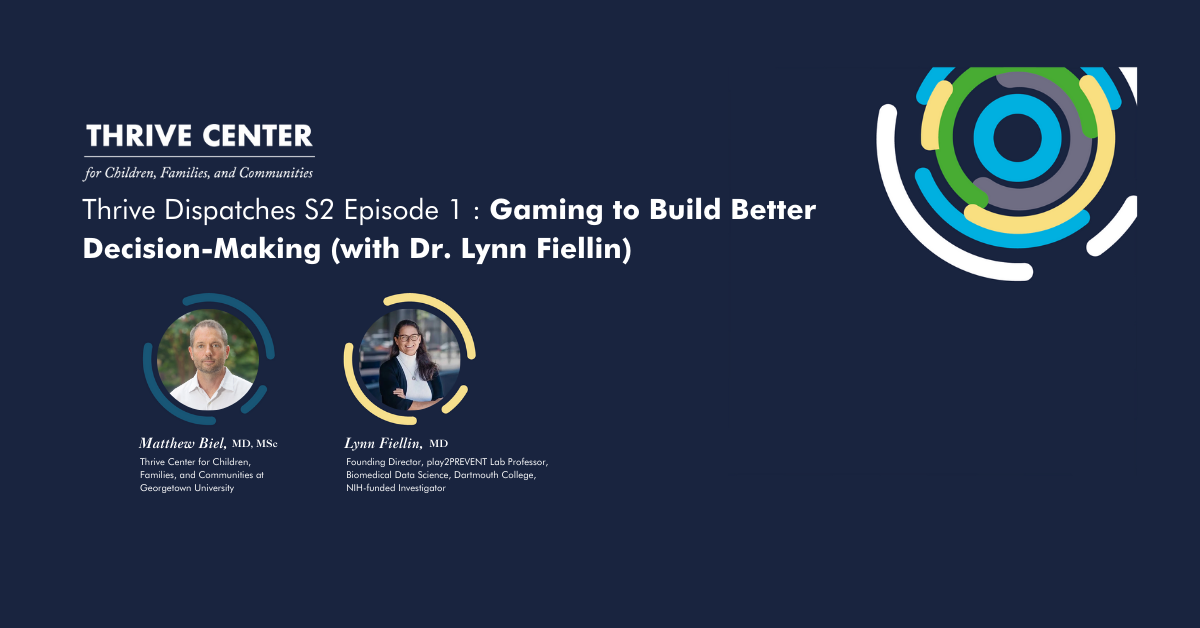Thrive Dispatches Season 2 Episode 1: Gaming to Build Better Decision-Making (with Dr. Lynn Fiellin)
In the first episode of season 2 we’re talking about video games. More specifically we’re speaking with Dr. Lynn Fiellin Play2Prevent Lab about how their video games are used as tools for substance use prevention in adolescents and health education.
Through five games developed with young people as co-designers, Dr. Fiellin’s team creates virtual environments where teens can experience the consequences of their choices safely and develop an understanding of risk, build refusal skills while maintaining social standing, and recognize that one mistake doesn’t define their path forward.
This episode explores how gaming combined with research and youth partnership, can transform prevention science—meeting young people where they are and speaking their language to promote not just survival, but thriving.
For questions, comments, or ideas for future episodes, please email us at: thrivecenter@georgetown.edu.
Download Full Transcript
Summary:
In this excerpt, Dr. Fiellin explains the challenge her games address—helping young people gain experience without real-world consequences:
This interview has been edited for length and clarity.
Lynn: The first part of my career, as a physician scientist in internal medicine and addiction medicine, I spent a lot of time working with young adults who were struggling with a number of issues. And what I would hear from them over and over again was, “if only I knew then what I know now.” It occurred to me that if I could combine this notion of teaching young people some of these decision-making skills and accurate information in an environment that they’re really happy and engaged in, that it might be a win-win.
Matt: What was your framework for what goes into effective decision making for young people?
Lynn: At its core, and at a minimum, is accurate knowledge. Very often there is inaccurate or incomplete knowledge. I distinctly remember this one young man, he couldn’t have been more than 14, very articulate, very clear, said, “Well, I know that you can get HIV from needles. People who use needles can get HIV. And I also know that the way we test for HIV is by drawing blood with a needle. So I am just not willing to risk getting HIV if they’re gonna use a needle to test me.” My jaw just dropped because in so many ways, it made so much sense. The construct made so much sense, and yet it was completely incorrect.
Matt: There’s another developmental trajectory here—risk taking. How does that weigh into your design?
Lynn: By design, our games are constructed so that they need to go down the path of the less positive decision first. What became abundantly clear was that kids really wanted to see both the positive and the negative. They wanted both sides of the coin. They wanted to hear what could happen with both a good choice and a bad choice. And that really informed the design—they need to go partway down the negative path, see what happens, and then can go back and open up the choice to go down the positive path.
It’s helping kids recognize that it’s not all or nothing, that there are ways that we make mistakes and can help correct them by making a better decision the next time. The best you can do is to be thoughtful and take in the information and try to balance it.
Listen to the full episode
